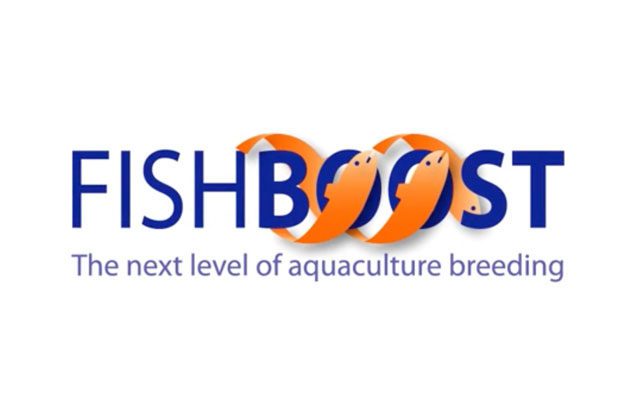FISHBOOST
Verktøy for bedre avlsprogram i europeisk havbruk

Prosjektet har som mål å bringe europeisk havbruk videre til et nytt nivå innen avl. Nofima koordinerer dette femårige prosjektet, som er finansiert av EUs 7. rammeprogram.
Start
01. feb 2014
Slutt
31. jan 2019
Finansiert av
EU - 7. rammeprogram
Samarbeid
Nofima, EFFAB, HCMR, Ifremer, IMARES, INIA, INRA, MTT, UEDIN, NMBU, UNIPD, USB, WU, ANDROMEDA S.A, FMD, FEAP, BMR GENOMICS, CETGA, MN, Geneaqua, Klatryb, LABOGENA, Salmobreed, SYSAAF, VRI, LP.
Prosjektleder(e):
14 anerkjente FoU-institusjoner i Europa innen fiskeavl samarbeider med sju små- og mellomstore bedrifter, fire større industriaktører og en NGO.
I samarbeidet vil det bli utviklet en teknologimiks av enkle og avanserte verktøy som kan bringe avlsprogrammene til seks fiskearter i oppdrett til nye nivå.
FISHBOOST skal dermed bidra til mer balanserte og bærekraftige avlsprogram som tar i bruk et bredt utvalg egenskaper, verktøy og teknologier. Gjennom et formidlingsprogram vil kunnskapen fra prosjektet overføres til relevante næringsaktører og andre sluttbrukere, og på den måten legge til rette for å fremme eksisterende avlsprogram i Europa og stimulere til å skape nye.
Se film om FISHBOOST
Filmen om prosjektet er laget av prosjektpartner EFFAB i samarbeid med Nofima.
Mål for prosjektet:
Målene for hver av de seks ulike fiskeartene i prosjektet (atlantisk laks, karpe, seabass, gilthead seabream, regnbueørret og piggvar) er:
- Quantify genetic variation for the most important traits that impact the global efficiency of the European aquaculture production, namely disease resistance, survival, feed efficiency, processing yields and adaptability to alternative diets, in order to increase the output of edible product for a given level of inputs and maximise economic gains.
- Use the latest genomic techniques to uncover the genetic architecture of resistance to major viral, bacterial and parasitic diseases for which there is no cost efficient prevention or treatment method available: Pancreas Disease in Atlantic salmon, Koi Herpes Virus in common carp, VNN in European seabass, Pasteurellosis and Sparicotyle in gilthead seabream, Flavobacteriosis in rainbow trout, and Scuticociliatosis in turbot.
- Identify nonlethal indirect selection criteria for fillet yield and feed efficiency, which presently cannot be efficiently selected for due to the impossibility of recording those traits on live breeding candidates.
- Develop a novel approach (mixture diet designs) to identify robust genetic components of the capacity of fish to thrive on multiple alternative (plant-based) diets.
- To collect and validate phenotypic and genotypic information relevant to real farming conditions by conducting a selected set of experiments directly on industry aquaculture populations and in the premises of our industry participants.
- Evaluate genetic relationships between disease resistance and production traits for more balanced and sustainable breeding goals.
- Develop appropriate statistical models, as well as (cost) efficient and user-friendly tools for more accurate prediction of breeding values by introduction of multitrait models and genomic predictions recognizing the biological and technical constraints of each species, to improve the selection process and be able to predict the genetic gains generated by alternative methods.
- Assess producer perception of selective breeding in aquaculture in order to identify means to improve the acceptance and adoption of advanced selective breeding methods in European aquaculture.
- Review existing breeding programmes in Europe, evaluate the economic impact of next level breeding methods accordingly, and provide a global assessment of the present and future economic impact of selective breeding on the European aquaculture sector.
- Integrate the advanced scientific, socioeconomics and economics information generated in the project in to a general framework for sustainable selective breeding, and produce protocols, guidelines and dissemination events (training sessions, specialised workshops, press articles) for aquaculture breeding companies, potential users of improved seed, aquaculture scientists, policy makers and the general public.
Se film
Resultater fra prosjektet oppsummert i en film
Publikasjoner
Forskningsområder
Avl og genetikk
Temaer
Avlsprogrammer